1894

On the 13th of June, Jacques Henri Lartigue is born in Courbevoie, near Paris, in the home of his parents, Marie Haguet and Henri Lartigue. His older brother, Maurice, nicknamed "Zissou," was born on the 2nd of August, 1890.
1903
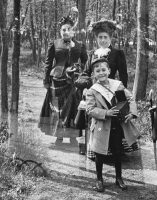
(from a stereoscopic glass negative, 6x13 cm)
Lartigue uses his father’s camera to take his first photos. He starts noting his thoughts and impressions on scraps of paper. This is the beginning of his diary.
1905

(from a stereoscopic glass negative 6x13 cm).
The cameras given to him by his father are increasingly sophisticated, light and easy to handle. Now he can shoot anything, even in motion. He can also create a three-dimensional effect using a stereoscopic camera. He learns how to use multiple exposures and photographs “ghosts.”
1909

(from a glass negative 4.5 x 6 cm)
Henri Lartigue buys the Château de Rouzat in Puy-de-Dôme. His two sons soon take to it as an ideal environment for their games and inventions.
1911
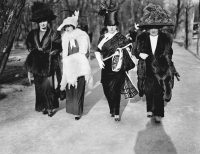
(from a glass negative 9 X 12 cm)
During the course of his strolls in the Bois de Boulogne, Lartigue photographs the fashionable "élégantes".
1912

In 1912, one of his photographs is reproduced on the cover of the newspaper "La Vie au grand air".
1912

(positive digitalized from a glass stereoscopic negative 6 X 13 cm)
In 1912, his father offers Lartigue the same year a new stereoscopic camera and a cinematographic camera "Pathé".
1914

World War I, Lartigue was postponed for health reasons.
1919

In December, Lartigue marries Madeleine Messager. Her father, the composer André Messager, is a former director of the Opéra Comique in Paris, Covent Garden in London and the Paris Opera.
1921

(from a stereoscopic autochrome plate, 6x13 cm)
Their son Dani is born on 23 th August.
Lartigue makes much use of the car to travel around France.
He devotes more and more time to painting: bouquets, gardens and portraits are his favorite themes. He produces his finest autochrome plates in the park of the Château de la Garoupe, on the Côte d'Azur.
Lartigue makes much use of the car to travel around France.
He devotes more and more time to painting: bouquets, gardens and portraits are his favorite themes. He produces his finest autochrome plates in the park of the Château de la Garoupe, on the Côte d'Azur.
1922

Lartigue exhibits at the Galerie Georges Petit and at several Parisian art salons. This is the beginning of his career as a painter. He meets the colorist Kees Van Dongen. Also at this time, he makes the acquaintance of Maurice Chevalier and the film director Abel Gance, who on several occasions suggests that they work together. This is also the beginning of his friendship with two French stage stars, Sacha Guitry and Yvonne Printemps.
1924
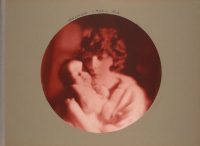
(from a glass negative 9x12 cm)
Birth of his second child, Véronique, whose godfather and godmother are Yvonne Printemps and Sacha Guitry. She lives only a few months.
1930

(from a glass negative 9x12 cm)
Lartigue meets Renée Perle, a model of Romanian origin. For the next two years she is his companion and his favorite model for paintings and photos.
He exhibits once again at the Galerie Georges Petit and at the Salon d’automne.
He exhibits once again at the Galerie Georges Petit and at the Salon d’automne.
1932

(from a film negative, 9x12 cm)
Alexis Granowsky hires Lartigue as assistant director for his film "Les Aventures du Roi Pausole", adapted from a novel by Pierre Louÿs. Basically he is a talent and location scout. He chooses the actresses who will play the film’s 150 “queens” and finds the parks and villas where much of the footage will be shot.
1934

(from a film negative 9x12 cm)
On the 12th of March, he marries Marcelle Paolucci, or “Coco”, as she is called. Her father is head electrician at the Cannes and Deauville casinos.
1935

(from a film negative 9 X 12 cm)
Lartigue has acquired a certain reputation as a painter – and now has to earn a living with his art. Like Van Dongen and Picabia, he offers his services as an interior decorator, working on the galas at the Cannes casino.
His exhibition of portraits (Van Dongen, Sacha Guitry, Marlene Dietrich, Georges Carpentier and Joan Crawford) at the Galerie Jouvène in Marseille is a great success.
His exhibition of portraits (Van Dongen, Sacha Guitry, Marlene Dietrich, Georges Carpentier and Joan Crawford) at the Galerie Jouvène in Marseille is a great success.
1944

Paris is liberated: Lartigue takes hundreds of photographs.
1945

(from film negative 6x6 cm)
Lartigue marries Florette Orméa on the 28th of August.
The couple divides its time between Paris and Piscop, in Val-d'Oise.
The couple divides its time between Paris and Piscop, in Val-d'Oise.
1954

(from a transparency 6x6 cm)
Foundation of the society "Gens d'Images" with Lartigue as vice-chairman.
Albert Plécy publishes Lartigue’s photos in "Point de vue et Images du Monde".
Albert Plécy publishes Lartigue’s photos in "Point de vue et Images du Monde".
1955

(from a film negative 6x6 cm)
At that time, Lartigue published more and more images in the illustrated press.
1957

(from a transparency 6x6 cm)
Jacques travels to Havana with Florette for an exhibition of his paintings. With the revolution coming, they continue their joutney to Mexico and New Orleans.
1960
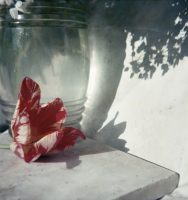
(from a transparency 6x6 cm)
Lartigue buys and moves into a house in Opio, near Grasse. He keeps its Parisian flat.
1962

While in New York, he presents his early 20th-century photos to Charles Rado of the Rapho agency, who shows them to John Szarkowski, Director of the Photography Department at the Museum of Modern Art.
1963

Exhibition at the Museum of Modern Art, New York, entitled "The Photographs of Jacques Henri Lartigue". Publication of a portfolio in "Life". His reputation as an outstanding photographer has been established.
1966

A new trip to New York, he befriended photographers Hiro and Richard Avedon. Publication of the book "Boyhood Photos of Jacques Henri Lartigue, the Family Album".
1970

Publication of the book "Diary of a Century", layout by Richard Avedon and Bea Feitler. The French edition "Instants de me vie" will be published in 1973. The book shows photos from after 1930.
1974

Lartigue is appointed official photographer to mark Valéry Giscard d’Estaing’s seven years as President.
1975

First French retrospective of his work at the Pavillon de Marsan in Paris: "Lartigue 8x80". Lartigue produces reports for fashion or decoration magazines. He photographs the shooting of the movie "Adèle H." by François Truffaut with Isabelle Adjani on the island of Guernsey.
1979

Lartigue signs the deed of donation to the State of all his photographic work.
1980
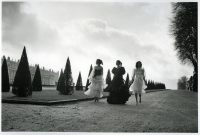
(from a negative 24x36 mm)
The donation is celebrated by an exhibition, "Bonjour Monsieur Lartigue", at the Grand Palais, Paris. Then it goes on world tour.
1981

(print from transparency, 24x36 mm)
Opening of the Jacques Henri Lartigue museum at the Grand Palais, Paris. Lartigue continues to undertake photographic assignments for magazines while pursuing his personal work (portraits, landscapes, flowers and gardens, etc.).
1982

(From a transparency 24x36 mm)
Lartigue celebrates the eightieth anniversary of his first photograph in 1902.
1986

(from a negative, 24x36 mm)
On the 12th of September Jacques Lartigue died in Nice.







